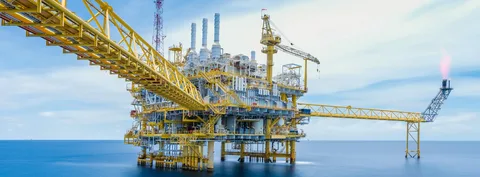Introduction
The Oil and Gas Upstream Projects Market represents the foundation of the global energy supply chain. It encompasses exploration, drilling, and production activities aimed at discovering and extracting crude oil and natural gas. Despite global transitions toward cleaner energy sources, upstream oil and gas projects continue to play an essential role in meeting the world’s growing energy demand. With new technological advancements and strategic investments, the sector is evolving to enhance operational efficiency, reduce emissions, and maintain long-term profitability.
Market Drivers
Key drivers shaping this market include rising global energy consumption, technological advancements in exploration and drilling, and growing investments in offshore and unconventional reserves. Increasing demand for oil and gas from developing economies, particularly in Asia-Pacific and the Middle East, continues to support exploration initiatives. Advanced seismic imaging, horizontal drilling, and enhanced oil recovery (EOR) technologies are enabling operators to tap into previously inaccessible reserves. Furthermore, the post-pandemic recovery of the global energy sector and stabilization of crude oil prices have prompted new project approvals, particularly in offshore and deepwater fields.
Market Challenges
The market faces several challenges, including volatile oil prices, environmental concerns, and regulatory complexities. Unpredictable price fluctuations can delay project approvals and reduce investor confidence. Moreover, upstream activities face increasing scrutiny due to carbon emissions and their contribution to climate change. Governments worldwide are implementing stricter environmental policies, requiring companies to adopt cleaner drilling techniques and carbon management strategies. Additionally, high capital expenditure requirements and supply chain disruptions—especially for offshore components—pose significant barriers to timely project execution.
Opportunities
Emerging opportunities lie in the digital transformation and decarbonization of upstream operations. Companies are investing heavily in automation, remote monitoring, and AI-driven predictive analytics to improve operational safety and efficiency. The adoption of carbon capture, utilization, and storage (CCUS) technologies is gaining traction to mitigate emissions from exploration and production activities. Growing collaboration between national oil companies (NOCs), international oil companies (IOCs), and technology firms is fostering innovation in drilling and reservoir management. Additionally, the increasing focus on low-carbon and methane reduction projects is creating new opportunities for sustainable upstream development.
Regional Insights
The Middle East and North America remain dominant players in upstream activities, with significant ongoing investments in both conventional and unconventional resources. Saudi Arabia, the UAE, and Qatar are expanding production capacities to meet export demands, while the United States continues to lead in shale oil and gas projects. In contrast, emerging regions such as Africa and Latin America are witnessing renewed exploration activity due to promising geological formations and supportive policies. Offshore exploration in the North Sea, West Africa, and Brazil is expected to rise as technological advancements lower operating costs.
Future Outlook
The future of the oil and gas upstream projects market lies in balancing profitability with sustainability. While fossil fuels will remain crucial in the global energy mix for decades, the focus will shift toward efficient production and carbon-neutral operations. Digital oilfields, automated rigs, and integrated data management systems will redefine project planning and execution. Companies investing in renewable integration and hybrid energy systems to power their upstream operations will gain a competitive advantage.
Conclusion
The Oil and Gas Upstream Projects Market is at a transformative juncture, driven by a combination of technological innovation and environmental responsibility. As the industry adapts to new realities of energy transition, upstream operations will continue to evolve—becoming smarter, cleaner, and more resilient. Strategic investments, regulatory alignment, and digital advancements will ensure that upstream projects remain vital in sustaining global energy stability.

